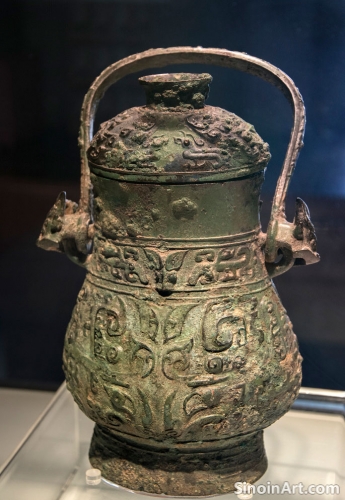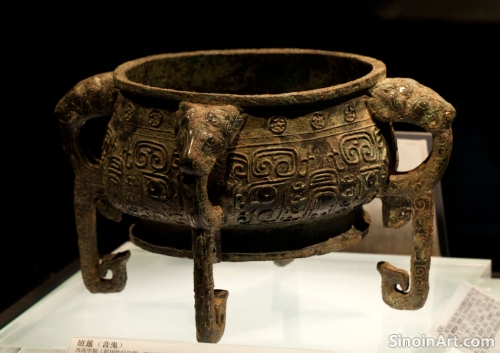Bronze Ware and the Development of Ancient Chinese Architecture: Design Principles and Construction Tools
|
While not a primary material for building, bronze played a significant role in ancient Chinese architecture, used to create tools, structural components, and decorative elements that were essential to the construction and design of buildings and complex structures. The careful management of materials and the interplay between different areas of expertise are a hallmark of the ancient Chinese approach to construction.  Bronze was used to create tools for surveying, measuring, and cutting stone and wood, helping to improve the accuracy and efficiency of building projects. The careful use of the proper instruments helped to ensure the longevity and reliability of large scale building projects.  Bronze fittings were also used in wooden buildings, providing durable joinery and decorative elements that added to the strength and visual appeal of the structure. The use of these pieces often helped to emphasize the scale and importance of the buildings that employed them. The use of bronze highlights the intermingling of art, architecture, and technology.  Bronze was also used in the creation of decorative elements on buildings, including plaques, plaques and other ornamentation, highlighting the integration of art and architecture in ancient China. The use of bronze helped to elevate the status of the buildings to something beyond a mere functional space. The integration of design, beauty, and function was a key element in ancient Chinese architecture. The study of bronze in the context of ancient Chinese architecture helps to illuminate the complex technical and artistic achievements of the builders and craftsmen of the time. The innovation and skill required for building in this era is truly impressive. The long lasting remains of these works help to paint a picture of the people and the culture that produced them. |
Tag : bronze architecture, ancient Chinese design, building tools, structural elements, construction methods
Related information
- Bronze Ware and Ancient Chinese Astronomy: Celestial Charts and Observational Tools
- The Significance of the “Ding” in Ancient Chinese Culture: Ritual, Power, and Symbolism
- Bronze Ware and the Ancient Chinese Elite: Luxury, Status, and Power
- A Guide to Further Study: Navigating the World of Chinese Bronze Ware Resources
- The Role of Bronze Ware in Ancient Chinese Trade with Southeast Asia: Exchange of Goods and Cultural Ideas
This article explores the use of bronze in ancient Chinese astronomy, focusing on the creation of armillary spheres, sundials, and other observational tools, demonstrating the integration of art, technology, and the ancient quest to understand the cosmos.
This article focuses on the ding (鼎) in ancient Chinese culture, exploring its role in ritual practices, its symbolism of power and authority, and its continuing legacy as an iconic symbol of ancient China.
This article explores the association of bronze ware with the ancient Chinese elite, highlighting its use as a symbol of wealth, status, power, and its role in reinforcing social hierarchies and displaying authority.
This article provides a guide to further study on Chinese bronze ware, highlighting academic journals, museum websites, online collections, and books, and providing a roadmap for continued exploration and research into this fascinating area of art and culture.
This article explores the role of bronze ware in ancient Chinese trade with Southeast Asia, highlighting the exchange of goods, the spread of cultural ideas, and the impact on both economic and artistic development across the region.